Today’s recipe was inspired by the fact that the magical cloudberry are now in season in Scandinavia. In fact, you get three recipes in one blog post today!
The cloudberry season is very short – from July to mid-August. It always makes me sad to not be there during this time so I can join my sister in picking these wonderful berries at our secret spot by my family’s cabin in the mountains of northwestern Norway.
What are cloudberries?
These mysterious berries are often called “Arctic Gold”, and are considered the most sought-after berries of the North. In Norway we call them multer, while in Sweden they go by hjorton and in Denmark they are known as multebær.
Cloudberries are part of the Rosaceae family of flowering plants which includes cherries, blackberries, apples, pears, blackberries and almonds. In the old days, people didn’t eat cloudberries for dessert, but rather as medicine against illnesses that were widespread in the north, such as scurvy.
Cloudberries are only found in the wild, in northern climates, often in mountainous regions, near the Arctic Circle. Their locations are kept secret much like truffles in Italy and similarly are beloved by Nordic chefs and food lovers. Demand often exceeds supply, making these berries even more sought-after.
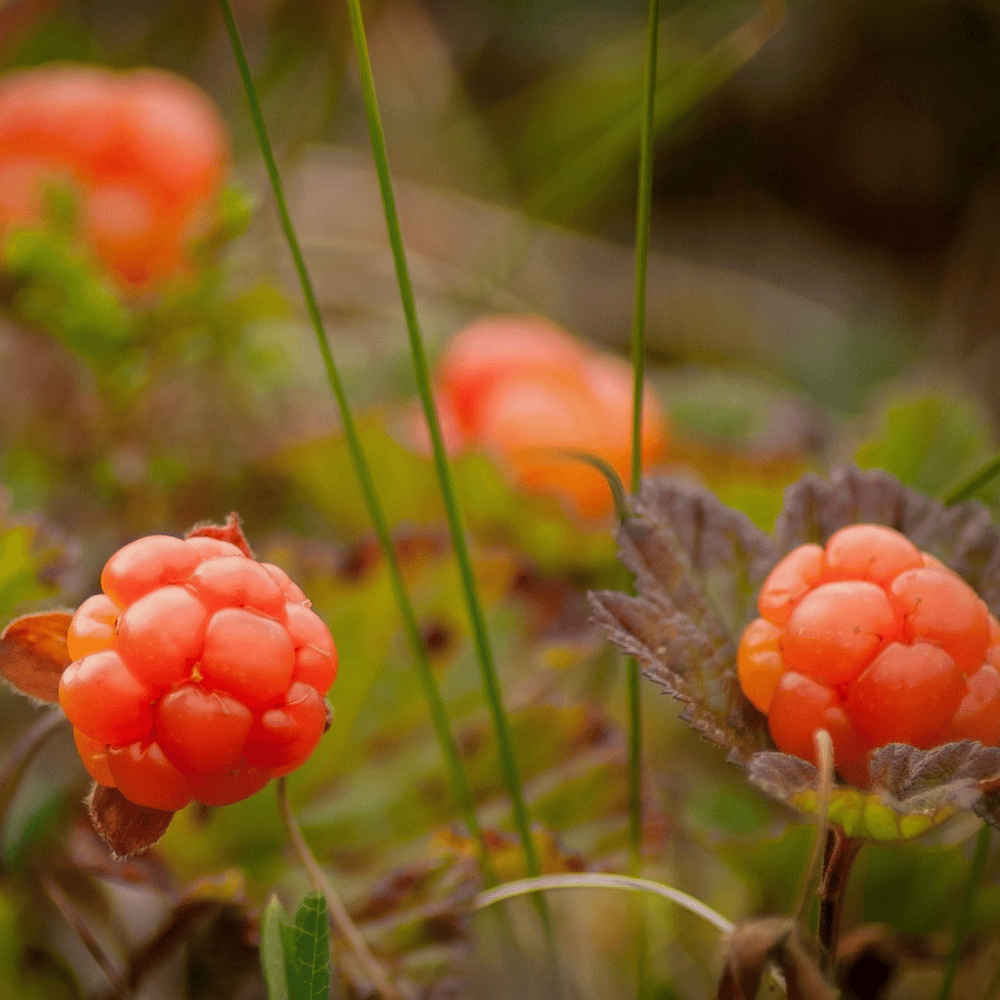
Orange in color, they may resemble raspberries but their flavors are more savory, tart and tangy, and when turned into preserves and jams they are lightly spicy as well. Combined with whipped cream they offer a great contrast of flavors which is why you often see cloudberry cream in Nordic desserts.
Since I cannot access cloudberries in north-eastern United States, I had to resort to cloudberry preserves which you can purchase using this link. (please note the brand is different from the photo below but I’ve also tried the Lars brand. I get a small commission if you use my link – thank you!)
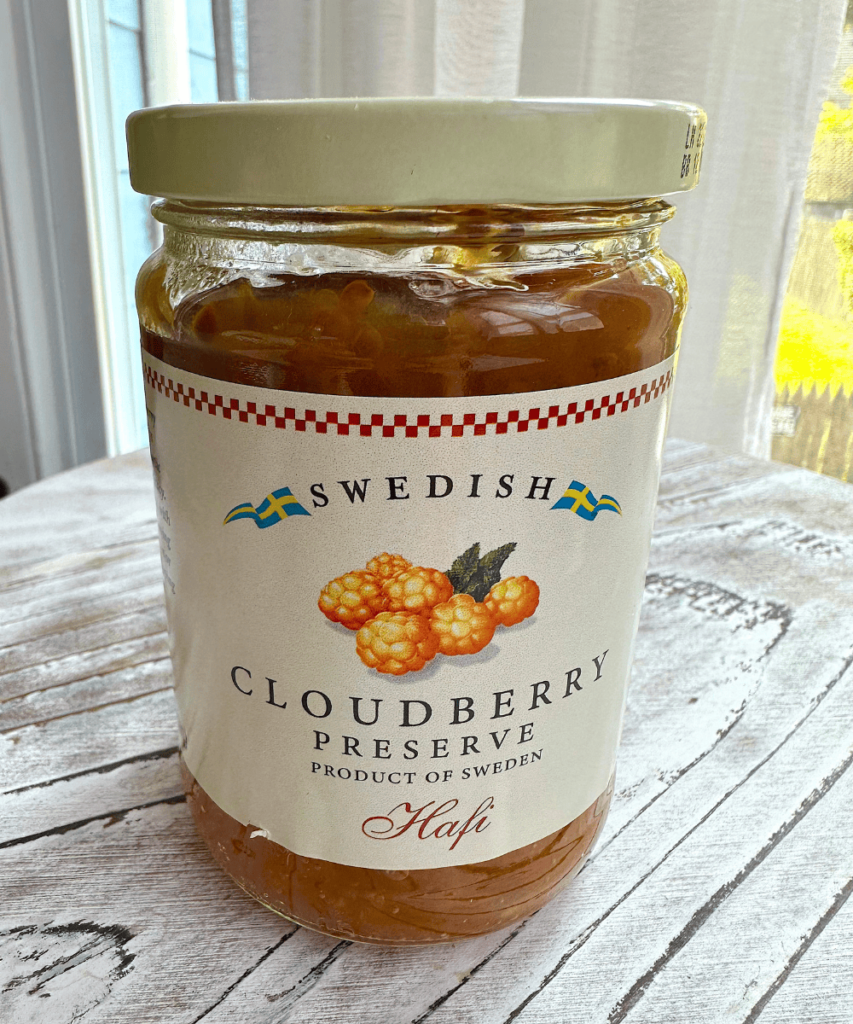
The most common way to enjoy cloudberries with whipped cream, or multekrem in Norwegian, is with krumkaker. You can learn to make my vegan version of krumkaker in my on-demand cooking class Norvegan Christmas Cookies along with many other popular Norwegian cookies.
I’ve also seen people enjoy them with different types of vafler but I wanted to make tørrevafler (literally transaltes to ‘dry waffles’) this time as I think they would be a great complement to multekrem.
Here’s a photo of multekrem with real cloudberries I had a few years back in Norway:
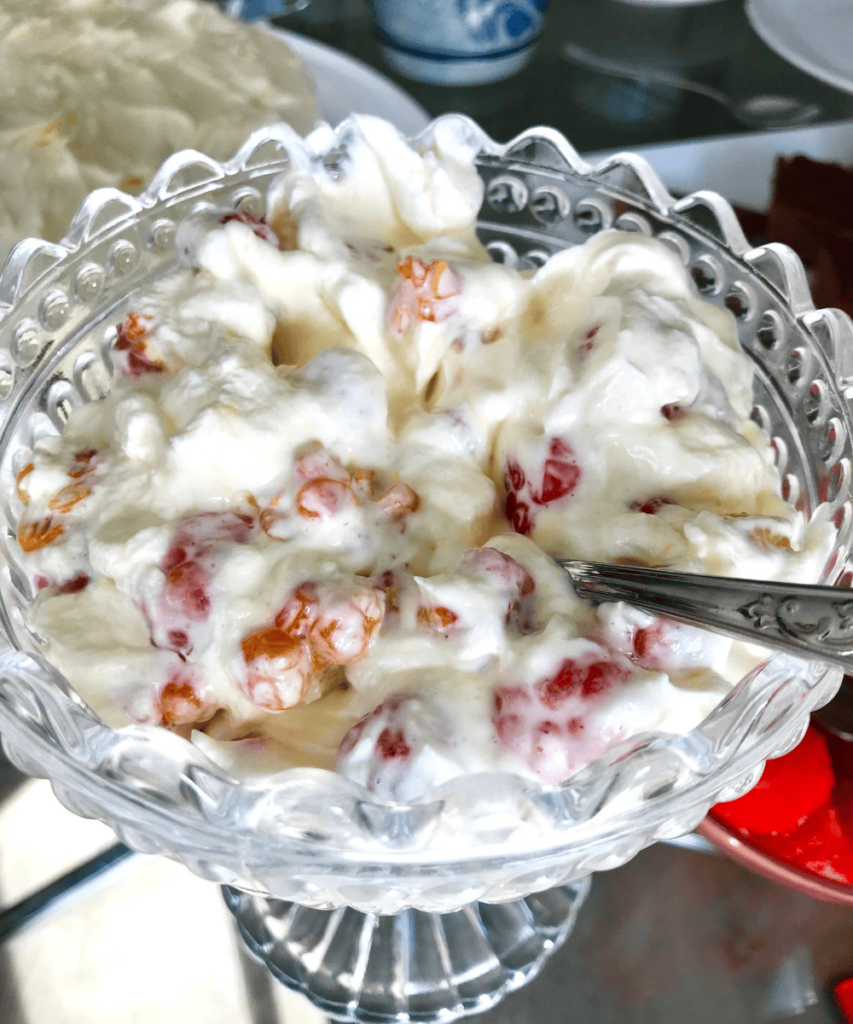
What is tørrevafler?
Tørrevafler are much like regular Norwegian heart-shaped waffles, except the batter is much firmer and they crisp up after cooking and become like cookies. The consistency is therefore crispy rather than soft.
Hartshorn is often used in tørrevafler in my home region of Norway, which gives them a distinct taste. It also goes by baker’s ammonia and can be found readily in the United States. If you can’t find it you can replace it with regular baking soda. I also like to use Swedish vanilla sugar in these cookies which you can also get online here in the United States. Vanilla extract can be substituted.
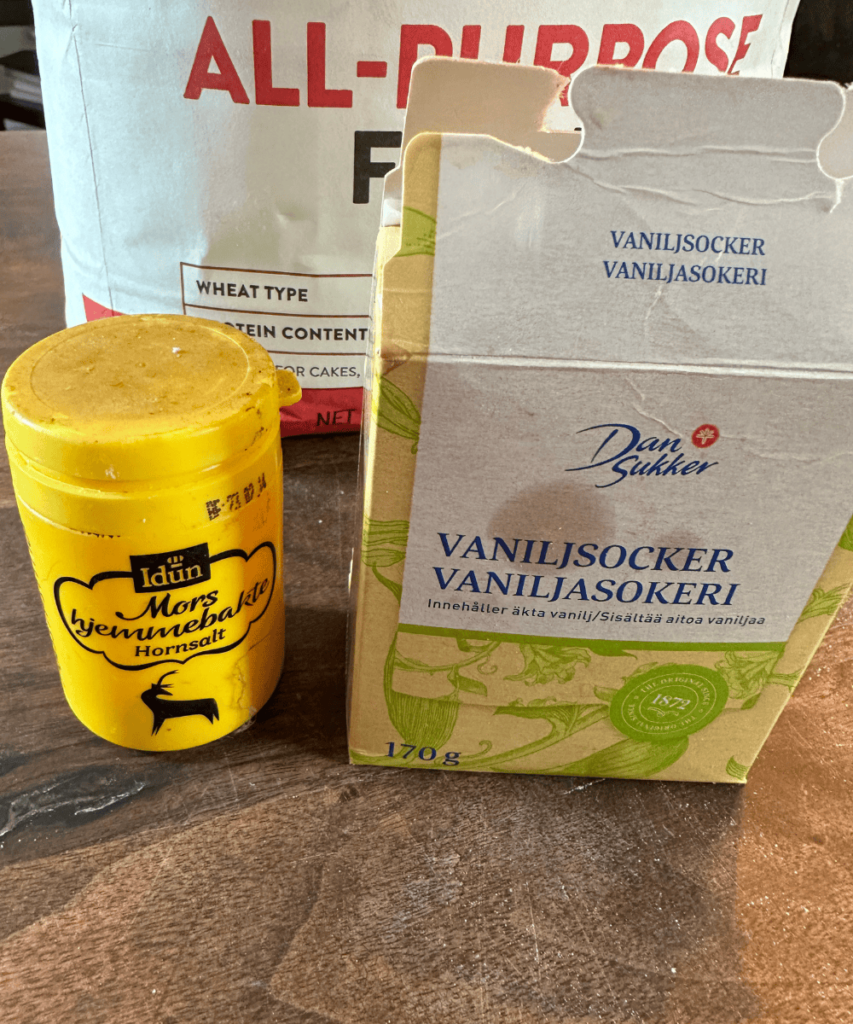
Flavorwise, tørrevafler are not too sweet. A common way to enjoy them is to slather them with butter and top them with slices of the famous Norwegian brown cheese (brunost). Other ways you can enjoy them is just with butter or various types of jam.
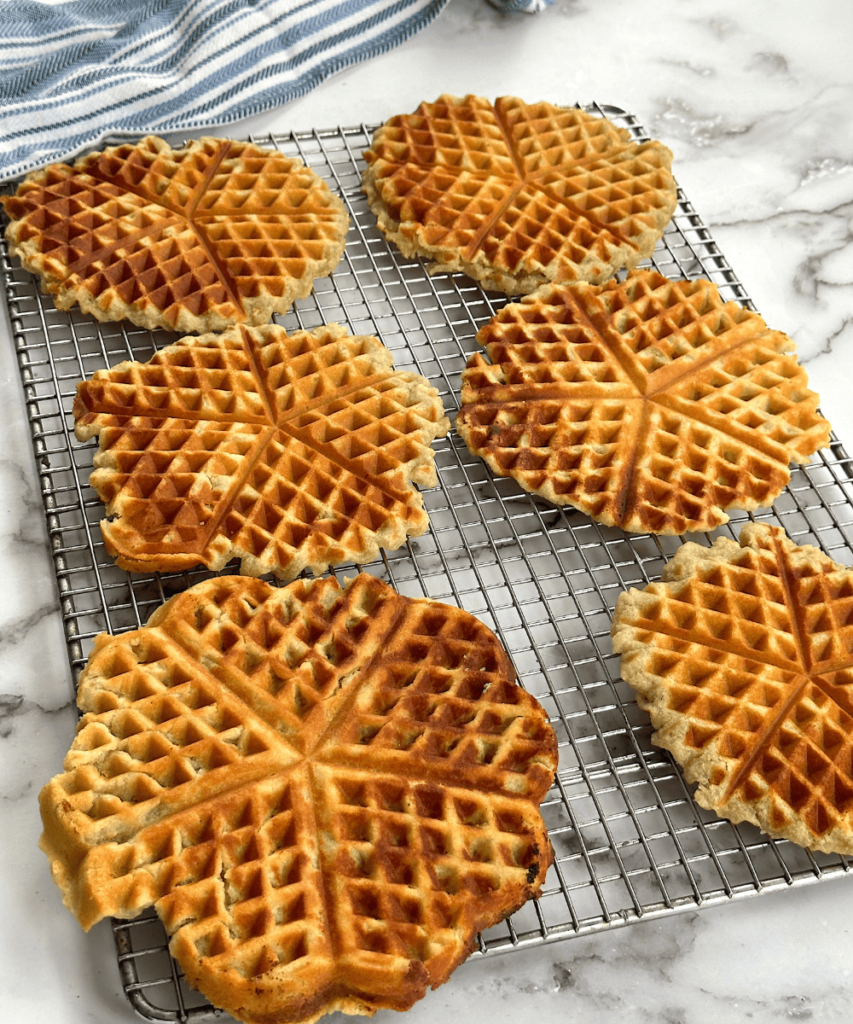
Another great thing about tørrevafler is that they keep for a long time so you can enjoy them for days and weeks! Double the recipe below if you have a large family, as these will disappear fast 🙂
For those of you who follow a gluten-free diet, there are also versions of this recipe where you can use all potato flour instead of all-purpose flour. This also makes them extra crispy!
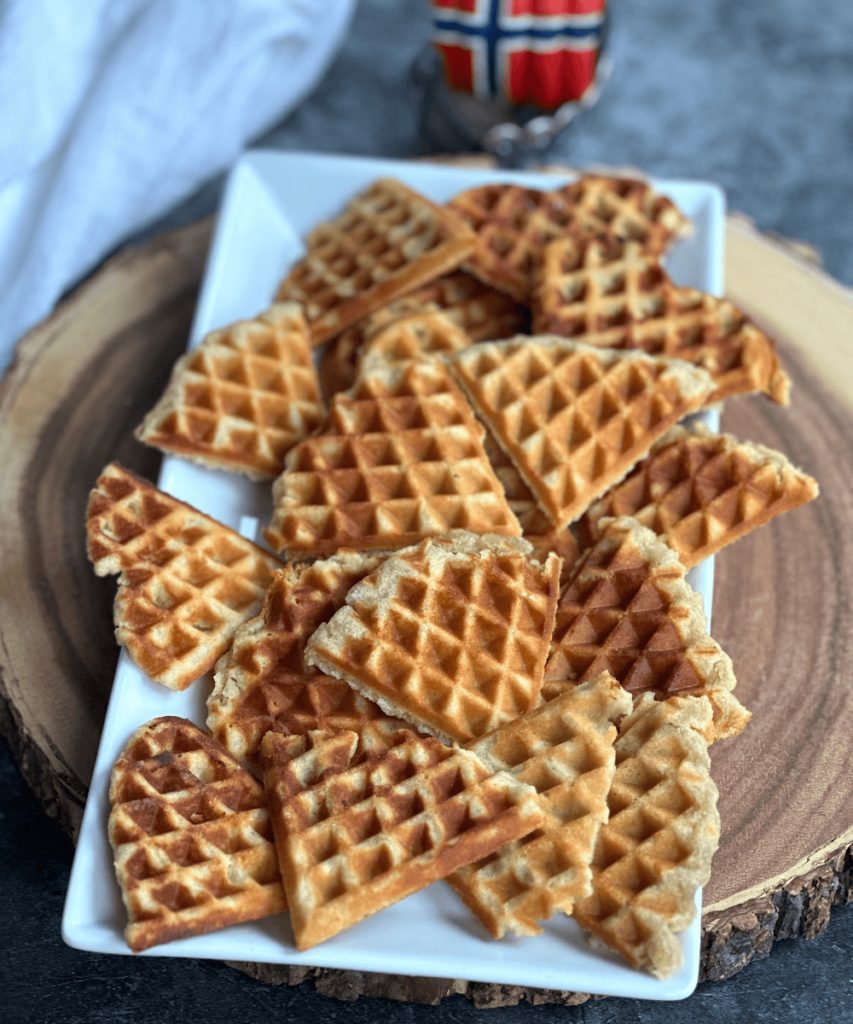
This recipe is based on my aunt Gudrun’s recipe, who was known for being an amazing cook and baker in my hometown of Sykkylven. She was not a fan of low-fat anything and used “real” butter, sour cream and cream in all of her recipes.
I think my vegan version of her recipes would make her proud. To make it a bit more decadent, I melted a little chocolate and dipped one end of the cookies in the chocolate, which makes them fun to look at (and of course to eat).
If you want to make the chocolate cover, simply melt 200 grams (1 cup) of vegan chocolate chips or pieces with 1 tablespoon of refined coconut oil in a double boiler.
Finally, to complete this dessert with tørrevafler and multekrem, I made a quick krokan, which is Norwegian for an almond brittle, that is drizzled on top.
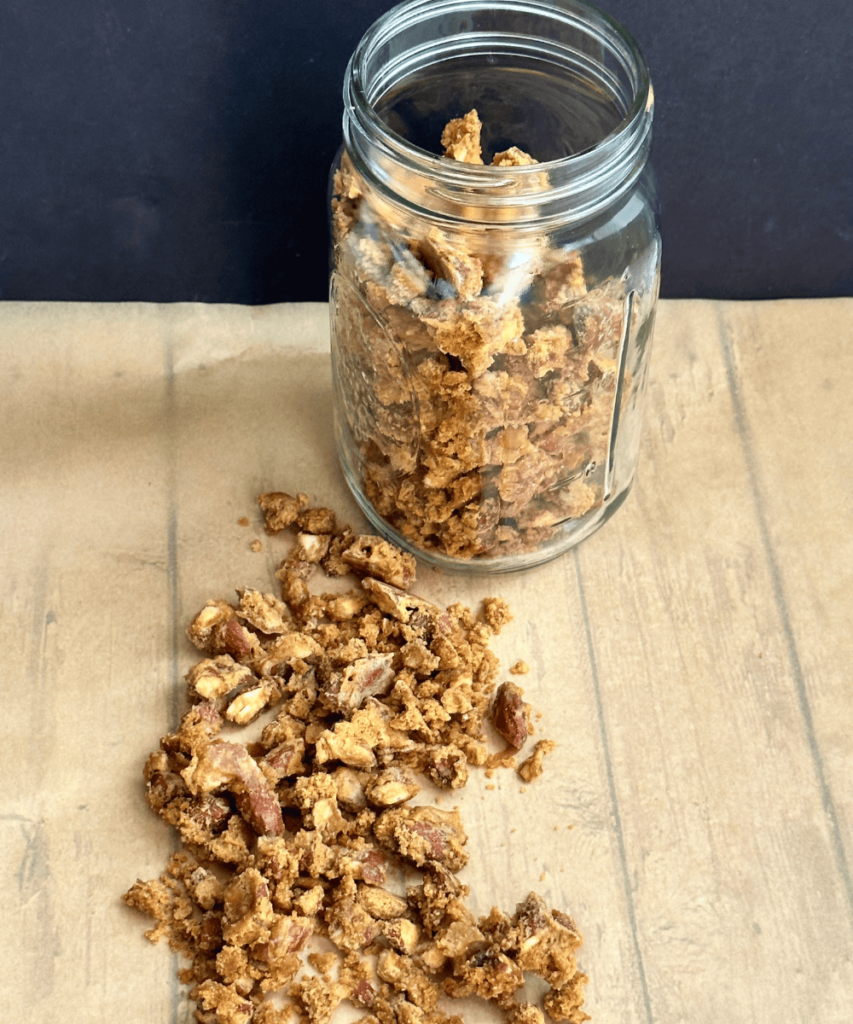
What I loved most about my aunt Gudrun is she was always so positive and welcoming. She never said a bad word about anyone and everyone was always welcome in her home, where she would put the kettle on.
She always had a million different types of cookies and sweets to offer no matter what time you popped in and she was so knowledgeable about regional, Norwegian food.
So this multi-layered dessert recipe is in memory of my aunt Gudrun… we miss you down here!
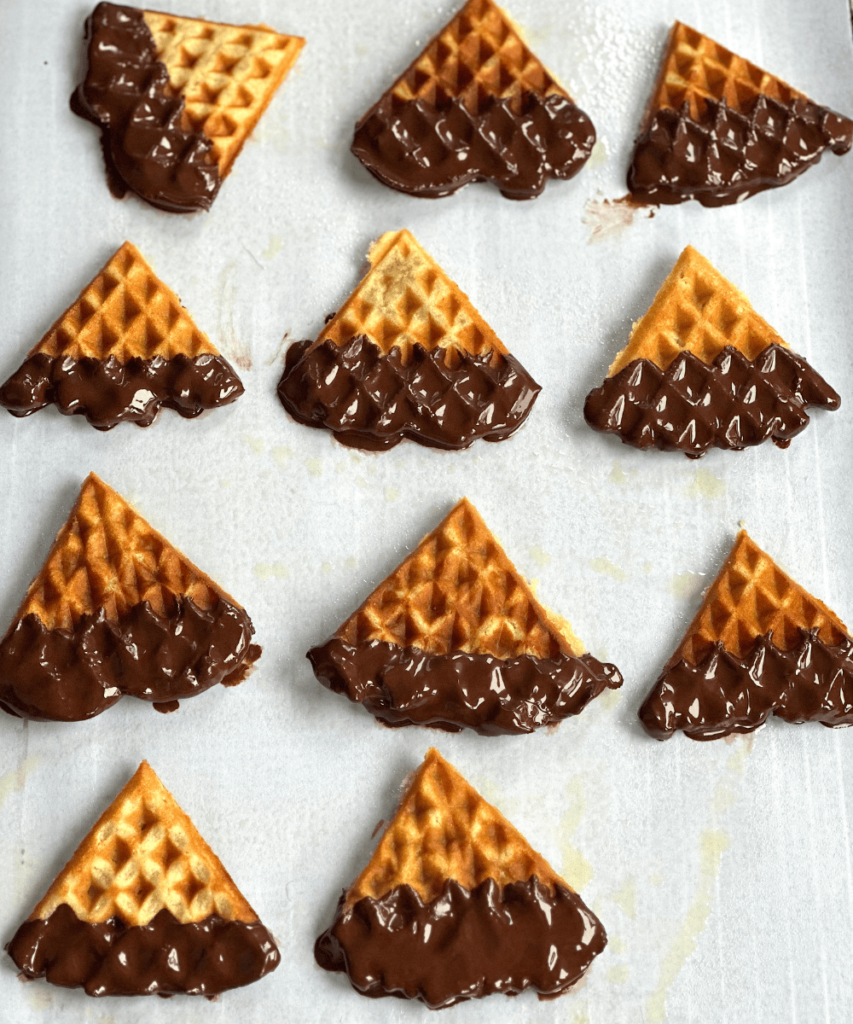
TØRREVAFLER (Waffle Cookies)
Makes about 14-16 waffles
1 ½ cups (300 grams) sugar
225 grams (2 sticks) vegan butter
6 tablespoons Just Eggs (or sub 2 tablespoons ground flax seeds + 6 tablespoons water)
1 cup (2.5 dl) vegan sour cream (I like Wayfair best)
2 teaspoons hartshorn (or sub baking soda)
2 teaspoons vanilla sugar
350 grams (2 ¾ cups) all-purpose flour, sifted * see note
150 grams (1 cup) potato flour
1/2 cup (1.25 dl) aquafaba (chickpea liquid), lightly whipped
Directions:
Add the sugar and butter in the bowl of a stand mixer fitted with the paddle attachment and whip on high speed until the mixture is light and fluffy. Turn the speed down to low, and pour in the Just Eggs (or flax eggs) gradually, followed by the sour cream, then the hartshorn (or baking soda) and vanilla sugar.
Lastly, add in the all-purpose flour and potato flour until you have a fairly firm mixture.
Remove the bowl from the stand, then using a spatula, carefully fold in the aquafaba.
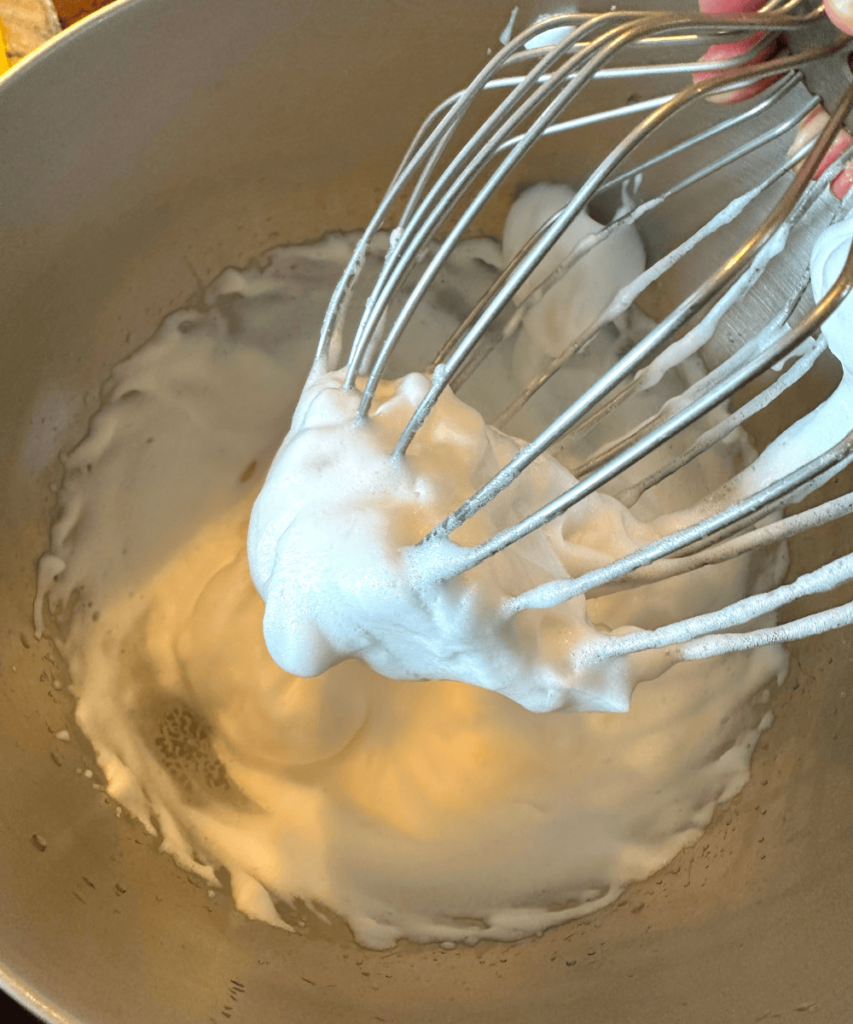
The consistency of tørrevafler should be more like a dough than a batter (as in regular vafler), about this consistency:
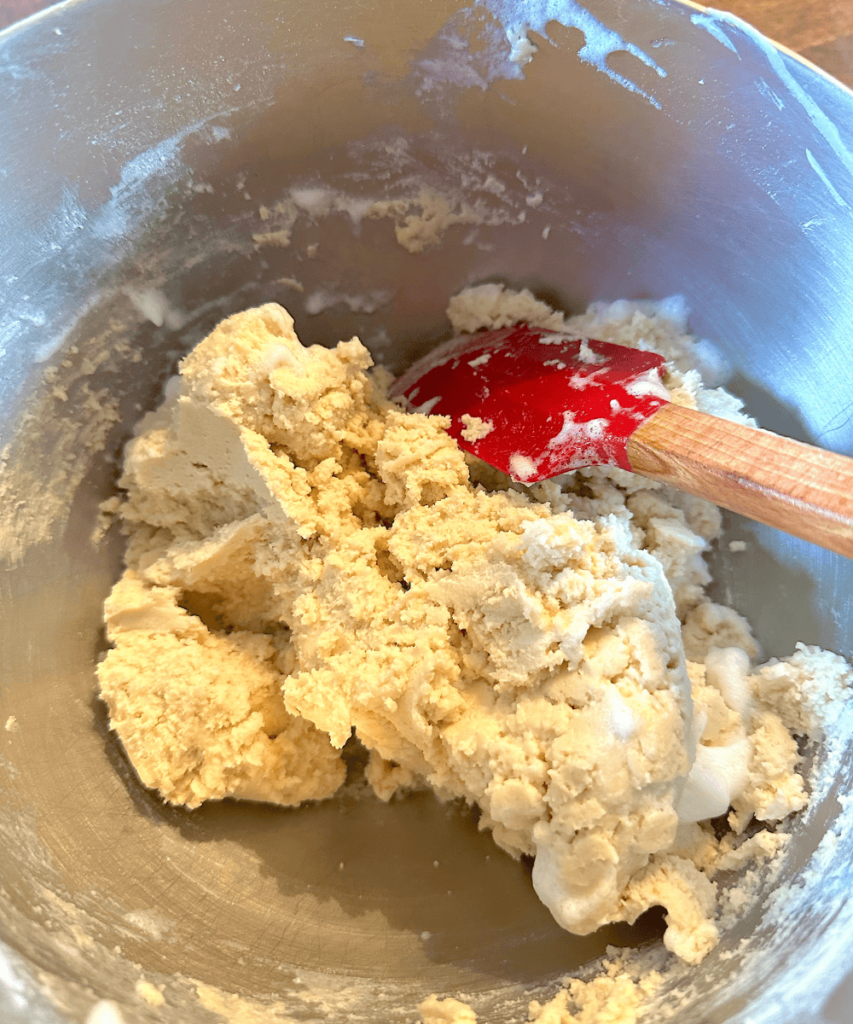
Transfer the dough onto a lightly floured surface. There are two ways you can do this: Divide the dough into 2-3 pieces, then roll out each piece and using a biscuit cutter
slightly smaller than your waffle iron waffle surface, cut out pieces.
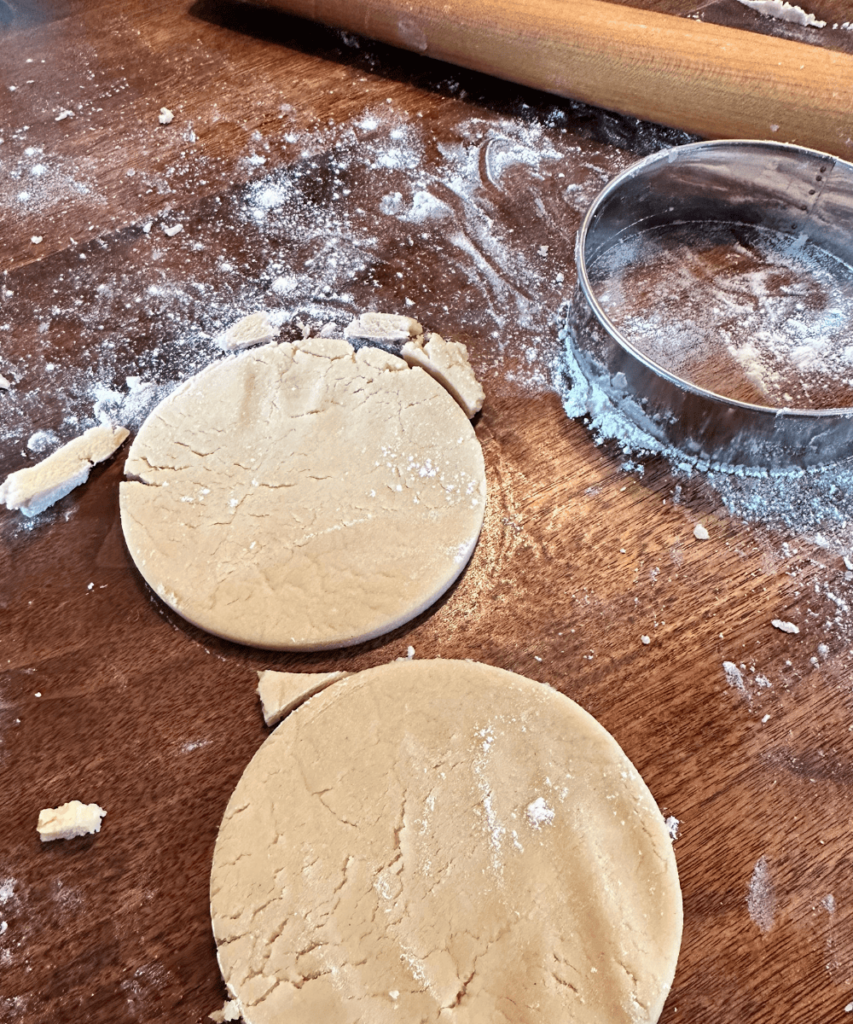
If you don’t have a biscuit cutter, you can divide the dough into 14-16 pieces. Roll out each one about the size of your waffle iron pattern using a rolling pin.
Heat up your waffle iron, spray or grease your iron, then cook the waffles – place them on a sheet tray fitted with a cooling rack.
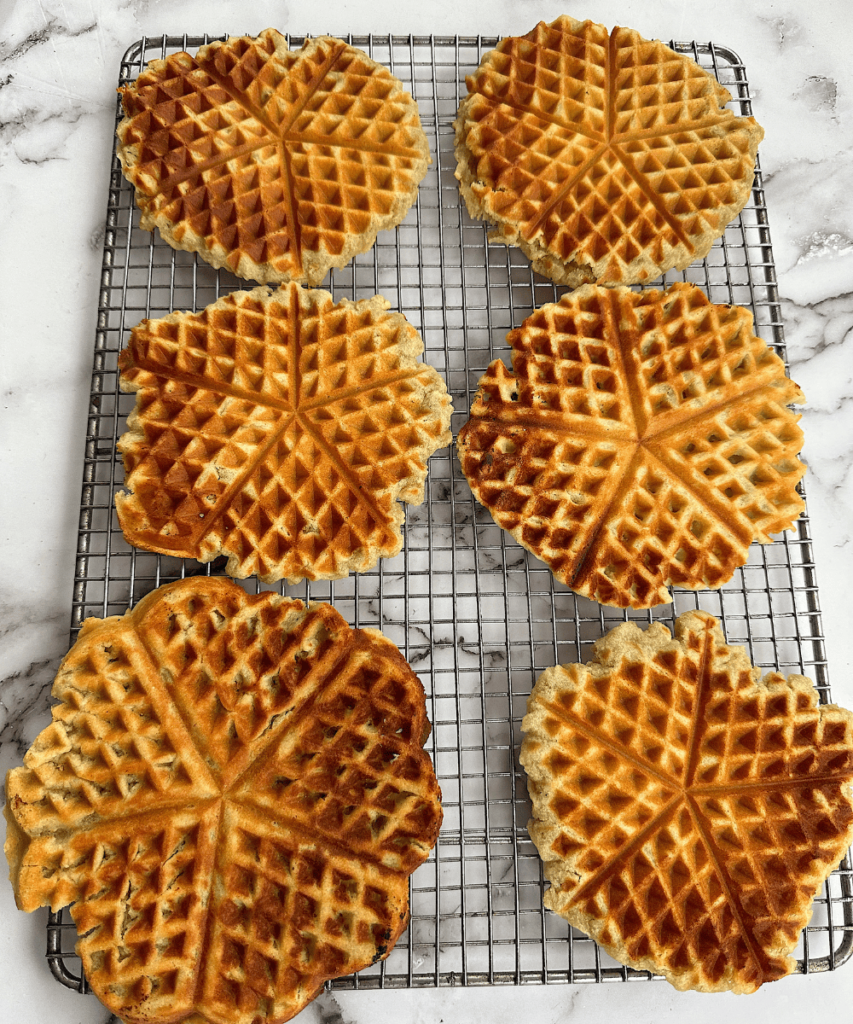
Let the waffles cool completely before breaking them into individual pieces. Keeps in airtight containers for a couple of weeks!
*Note: You can replace the all-purpose flour with more potato flour to make these gluten-free.
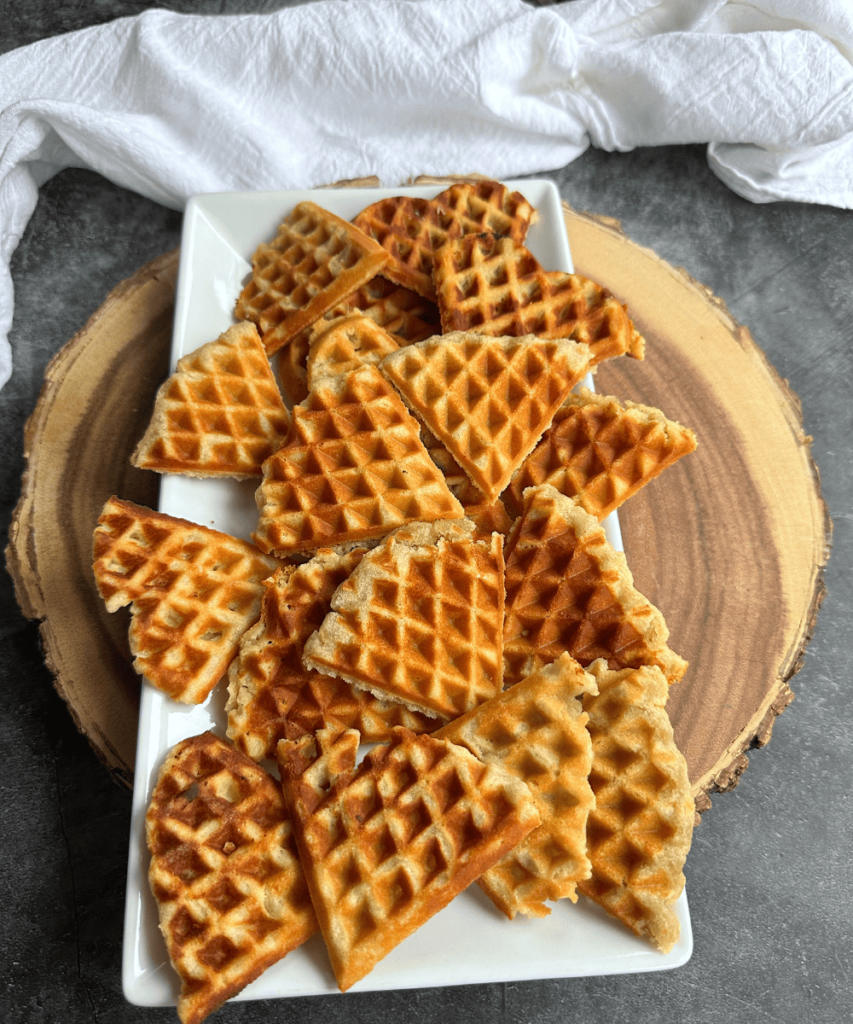
TØRREVAFLER (Waffle Cookies)
Ingredients
- 1 ½ cups (300 grams) sugar
- 225 grams (2 sticks) vegan butter
- 6 tablespoons Just Eggs or sub 2 tablespoons ground flax seeds + 6 tablespoons water
- 1 cup (2.5 dl) vegan sour cream (I like the Wayfair brand best)
- 2 teaspoons hartshorn or sub baking soda
- 2 teaspoons vanilla sugar
- 350 grams (2 ¾ cups) all-purpose flour, sifted *see note
- 150 grams (1 cup) potato flour
- 1/2 cup (1.25 dl aquafaba) (chickpea liquid), lightly whipped
Instructions
- Add the sugar and butter in the bowl of a stand mixer fitted with the paddle attachment and whip on high speed until the mixture is light and fluffy. Turn the speed down to low, and pour in the Just Eggs (or flax eggs) gradually, followed by the sour cream, then the hartshorn (or baking soda) and vanilla sugar.
- Lastly, add in the all-purpose flour and potato flour until you have a fairly firm mixture.
- Remove the bowl from the stand, then using a spatula, carefully fold in the aquafaba. The consistency of tørrevafler should be more like a dough rather than a batter
- Transfer the dough onto a lightly floured surface. There are two ways you can do this: Divide the dough into 2-3 pieces, then roll out each piece using a biscuit cutter
- slightly smaller than your waffle iron waffle surface, cut out pieces.
- If you don’t have a biscuit cutter, you can divide the dough into 14-16 pieces. Roll out each one about the size of your waffle iron pattern using a rolling pin.
- Heat up your waffle iron, spray or grease your iron, then cook the waffles – place them on a sheet tray fitted with a cooling rack.
- Let the waffles cool completely before breaking them into individual pieces. Keeps in airtight containers for a couple of weeks!
Notes
KROKAN (Almond Brittle)
⅔ cups (130 grams) sugar
¼ cup (60 ml) maple syrup
¼ cup (60 ml) water
1 ½ cup (225 grams) almonds
1 teaspoon sea salt
2 teaspoons unsalted butter
1 teaspoon baking soda
Line a large baking sheet with parchment paper. In a large saucepan, combine the sugar, water and corn syrup and cook over medium heat, stirring, until the sugar is dissolved about 3-4 minutes.
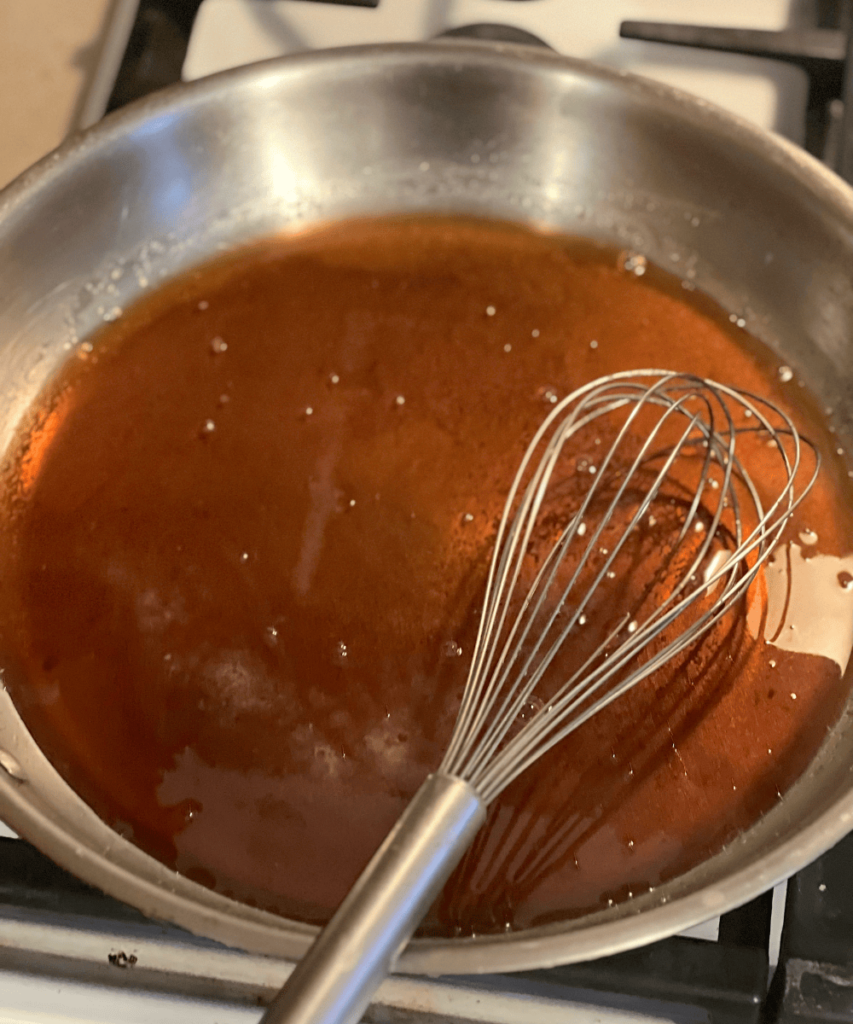
Add the almonds and salt and cook, stirring occasionally, until a deep amber caramel develops, about 5 minutes longer.
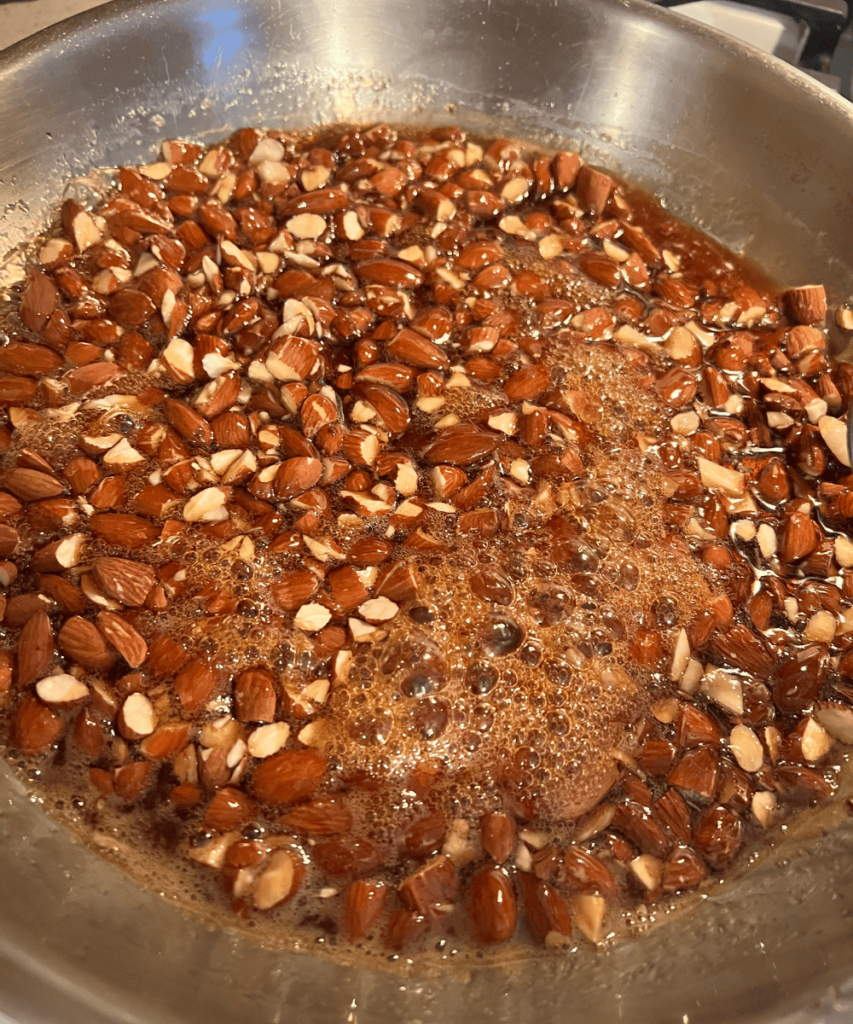
Remove the mixture from the heat and immediately stir in the butter and then the baking soda; the caramel will bubble. Pour the hot krokan onto the baking sheet and spread it in an even layer with the back of a spoon.
Let it cool slightly completely before breaking it into shards.
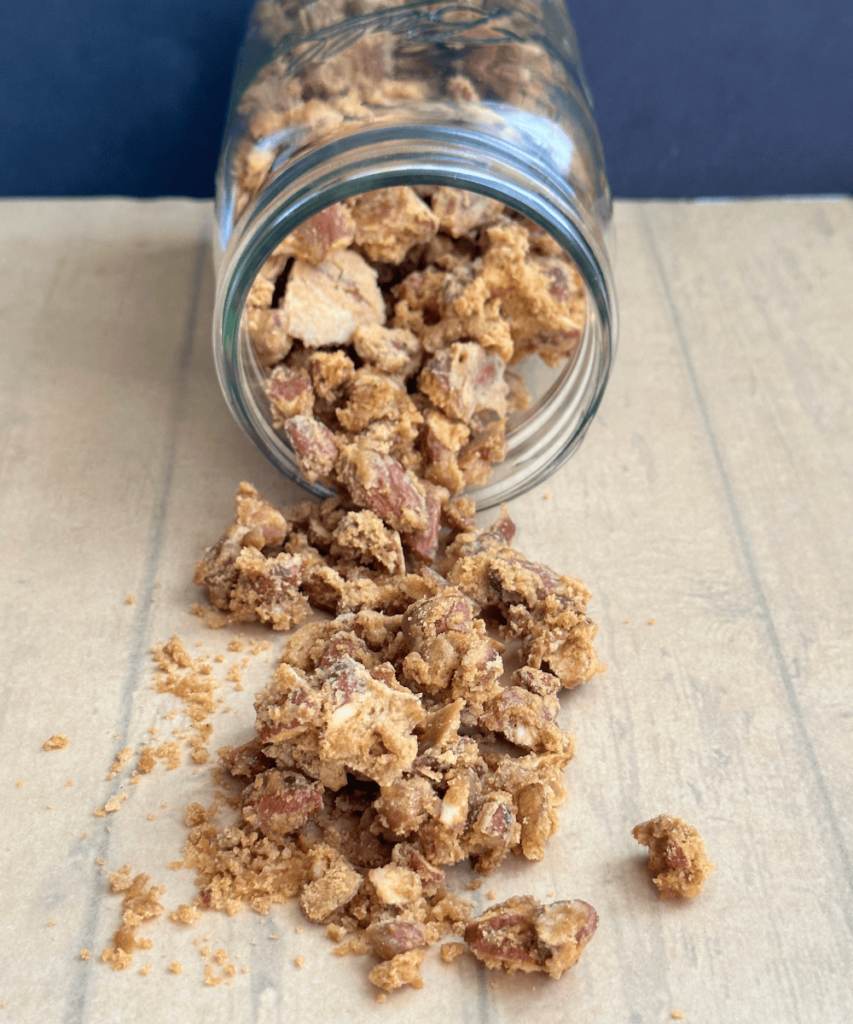
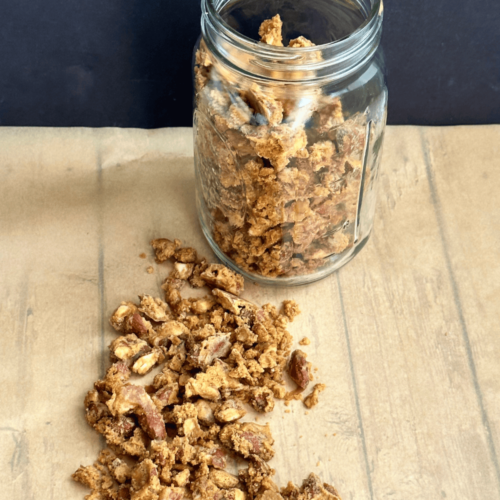
KROKAN (Almond Brittle)
Ingredients
- ⅔ cups (130 grams) sugar
- ¼ cup (60 ml) maple syrup
- ¼ cup (60 ml) water
- 1 ½ cup (225 grams) almonds
- 1 teaspoon sea salt
- 2 teaspoons unsalted butter
- 1 teaspoon baking soda
Instructions
- Line a large baking sheet with parchment paper. In a large saucepan, combine the sugar, water and corn syrup and cook over medium heat, stirring, until the sugar is dissolved about 3-4 minutes.
- Add the almonds and salt and cook, stirring occasionally, until a deep amber caramel develops, about 5 minutes longer.
- Remove the mixture from the heat and immediately stir in the butter and then the baking soda; the caramel will bubble. Pour the hot krokan onto the baking sheet and spread it in an even layer with the back of a spoon.
- Let it cool slightly completely before breaking it into shards.
MULTEKREM (Cloudberry Cream)
1 ¾ cups (4 dl) vegan heavy whipping cream (like Country Crock or Violife)
4 tablespoons powdered sugar
2 teaspoons vanilla extract or vanilla sugar
1 cup (2.5 dl) cloudberry preserves, plus more for layering dessert
Add the vegan heavy whipping cream with the powdered sugar and vanilla extract/sugar in the bowl of a stand-mixer fitted with the whisk attachment.
Whip on high speed for about 2 minutes until soft peaks form. Using a spatula carefully fold in the cloudberry preserves. Keep chilled until ready to serve.
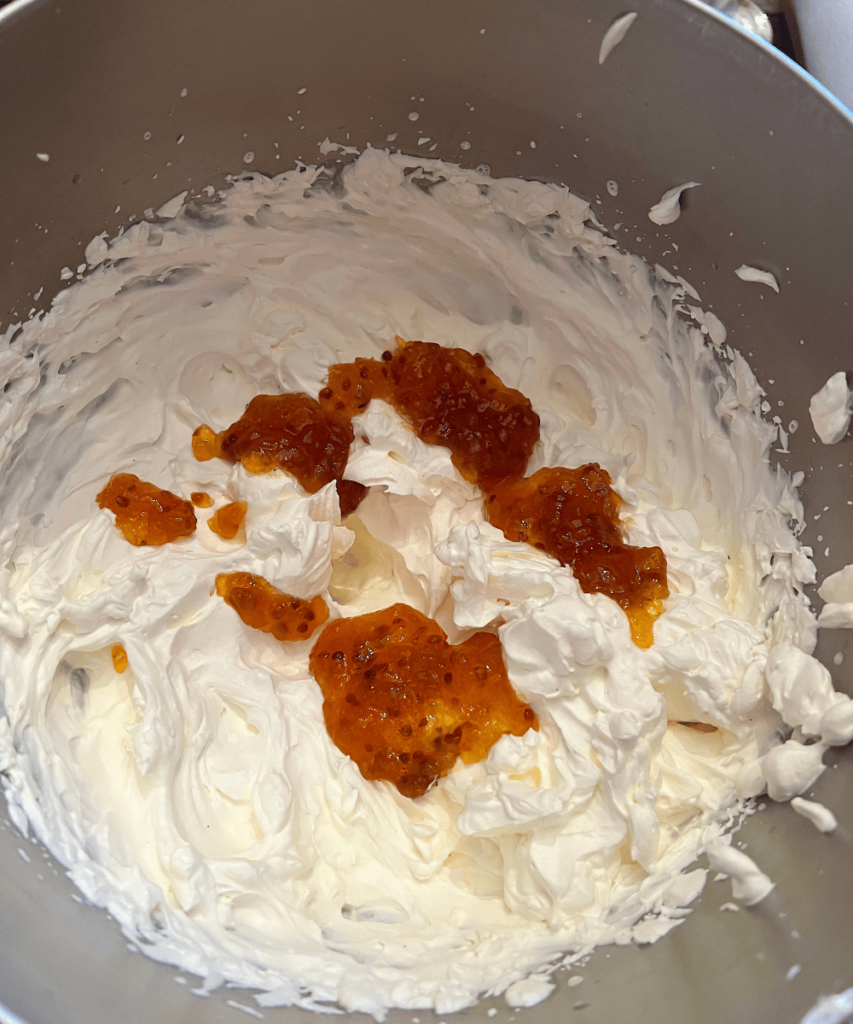
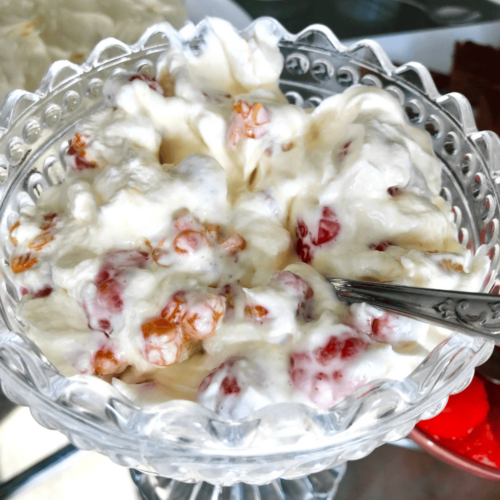
MULTEKREM (Cloudberry Cream)
Ingredients
- 1 ¾ cups (4 dl) vegan heavy whipping cream like Country Crock or Violife
- 4 tablespoons powdered sugar
- 2 teaspoons vanilla extract or vanilla sugar
- 1 cup (2.5 dl) cloudberry preserves, plus more for layering dessert
Instructions
- Add the vegan heavy whipping cream with the powdered sugar and vanilla extract/sugar and whip on high speed for about 2 minutes until soft peaks form. Using a spatula carefully fold in the cloudberry preserves. Keep chilled until ready to serve.
Finally, once you have all the ingredients ready, to assemble the dessert:
Place a couple of dollops of the cloudberry cream in a decorative glass such as a cognac snifter or Irish coffee drink glass, drizzle with a little cloudberry preserve and almond brittle, then repeat the layering once more time.
Serve with a piece of chocolate-covered Norwegian waffle cookie and enjoy!
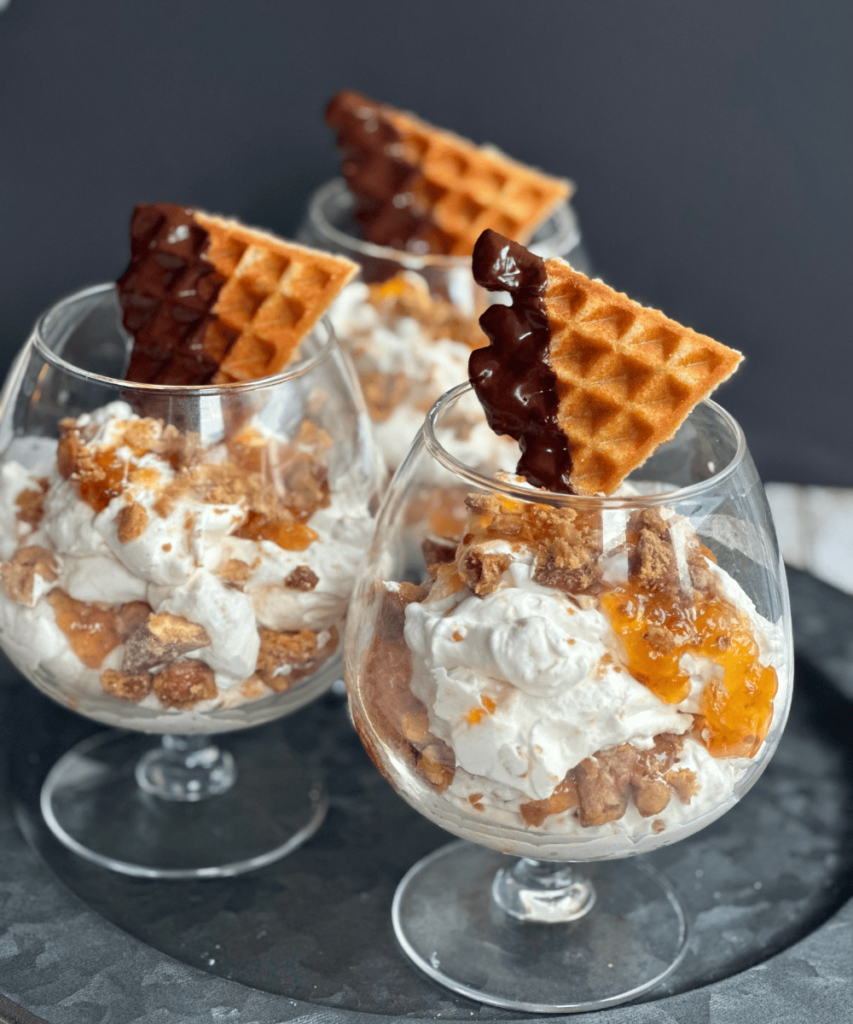
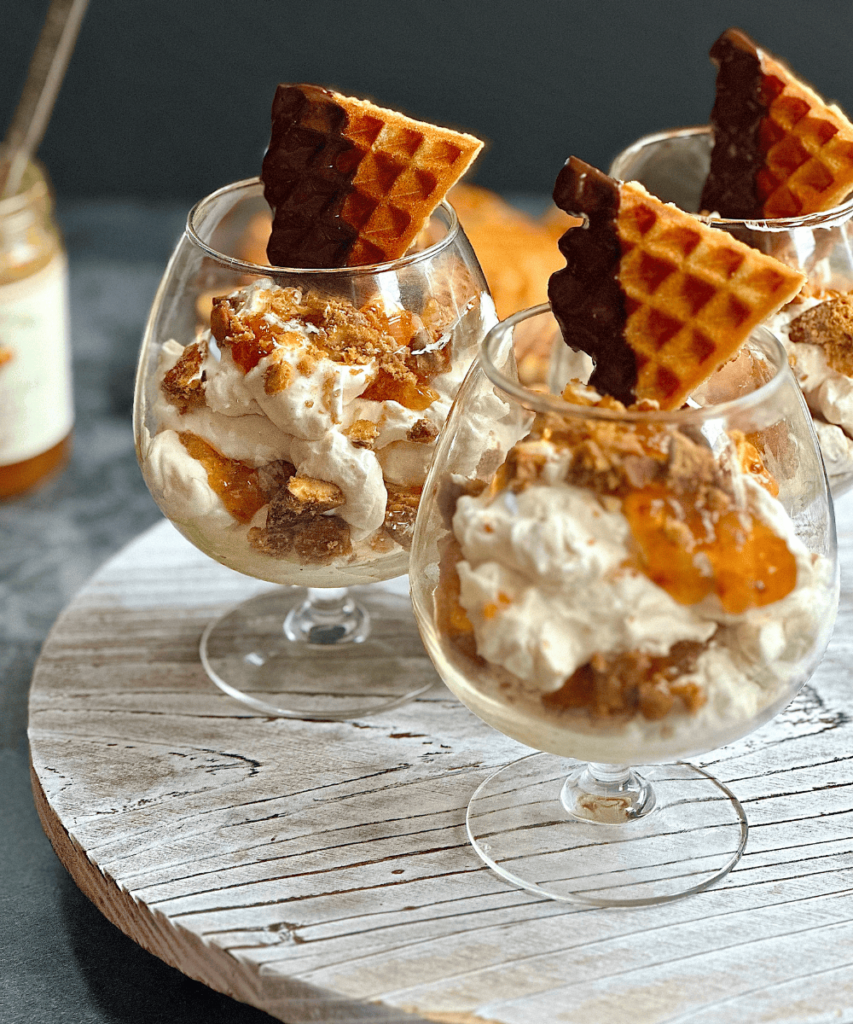
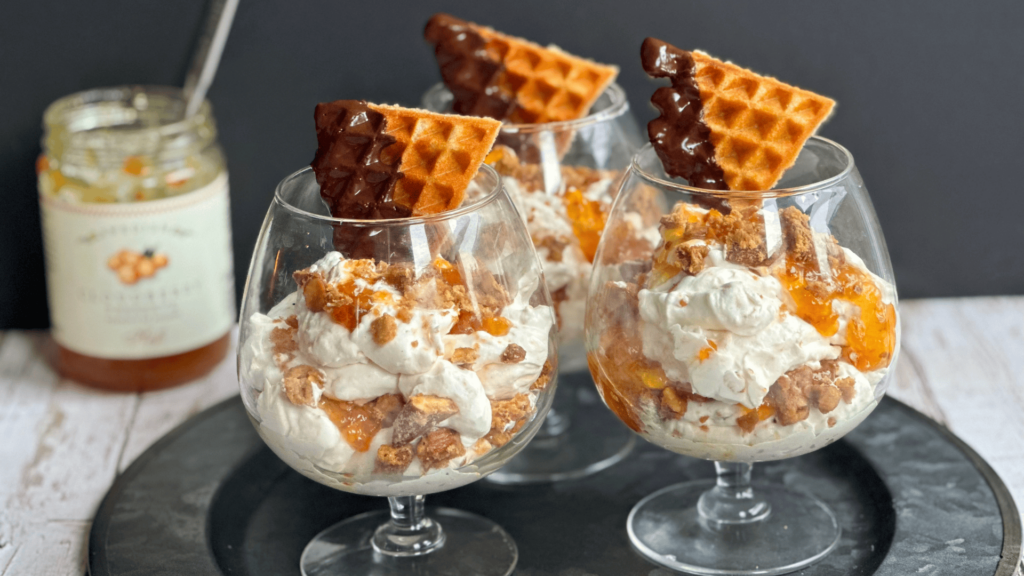
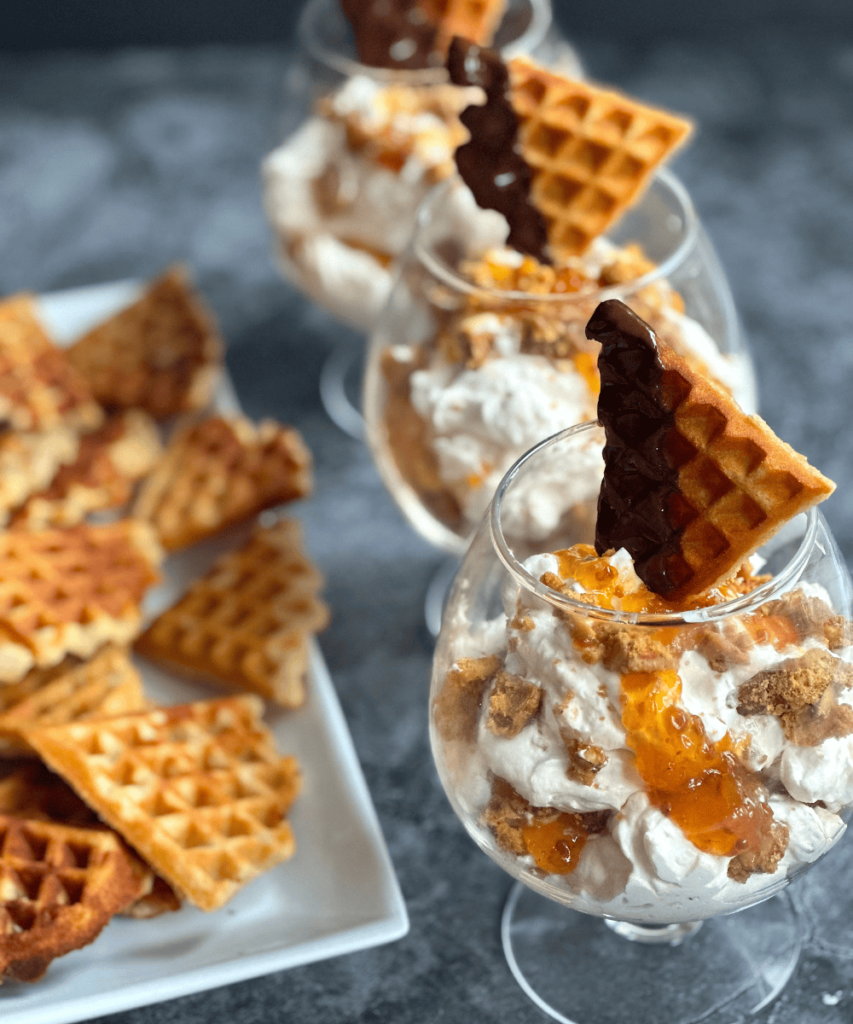
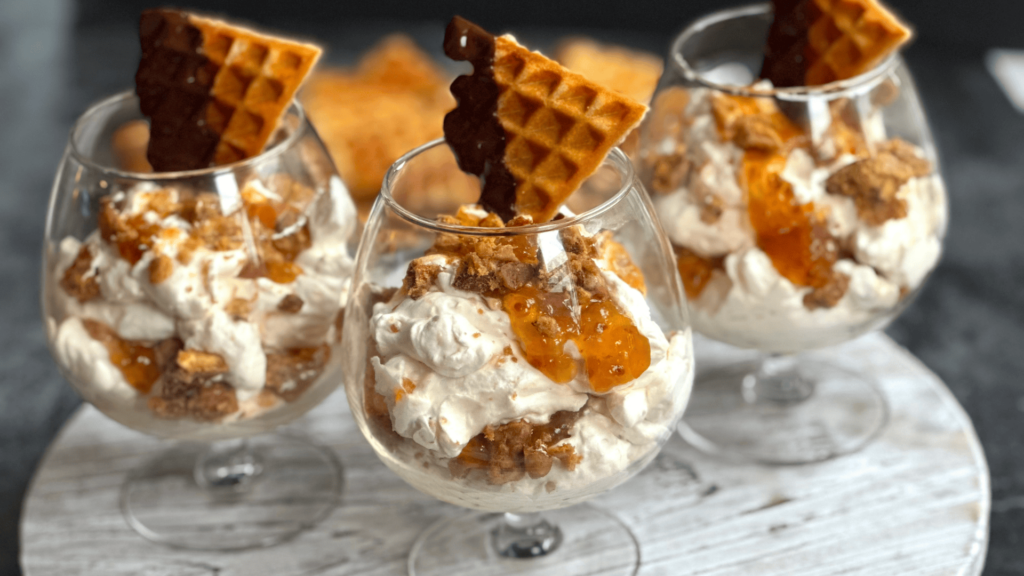








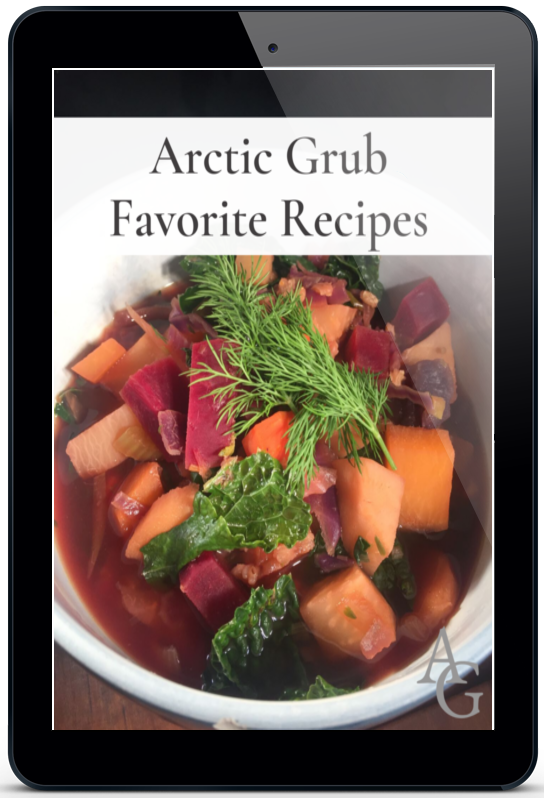
0 Comments